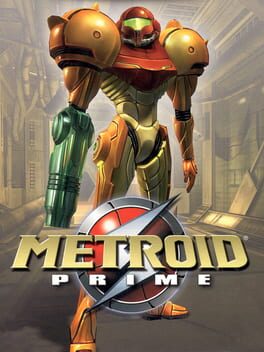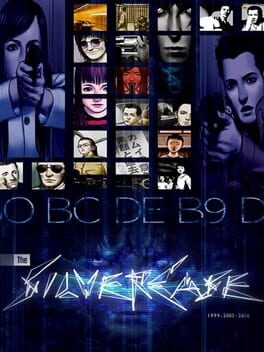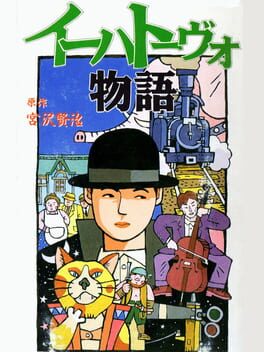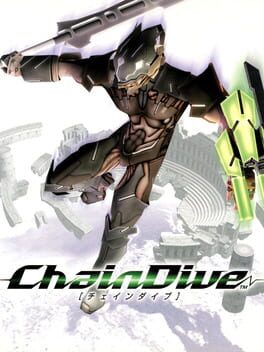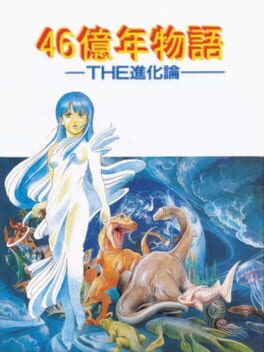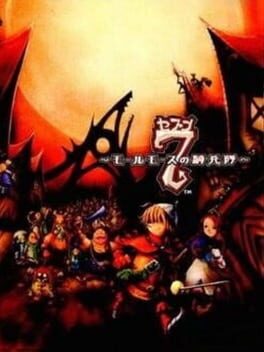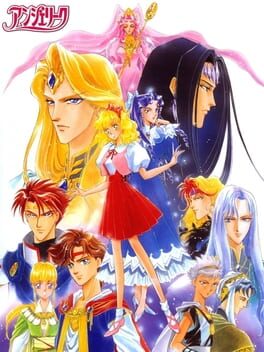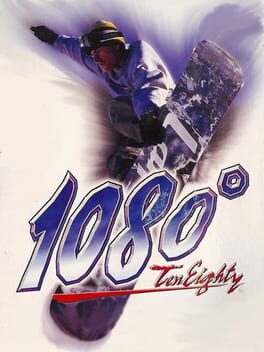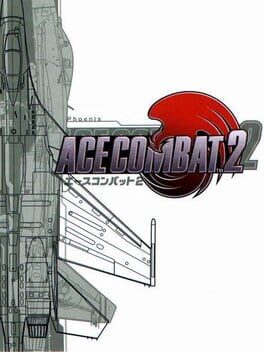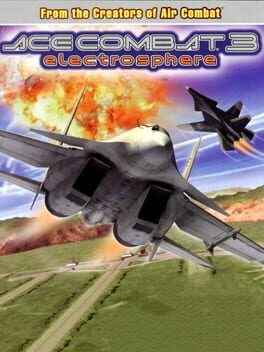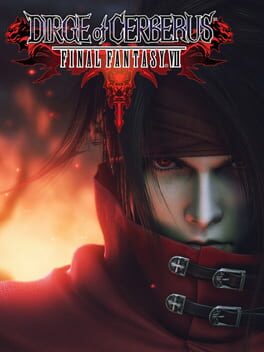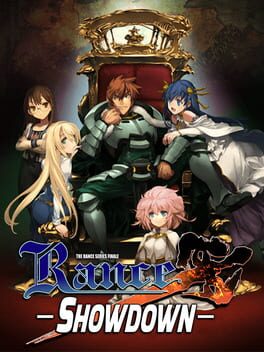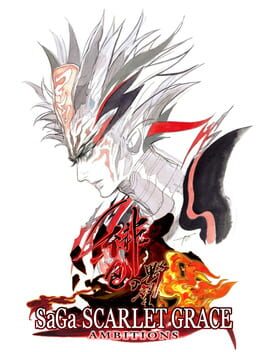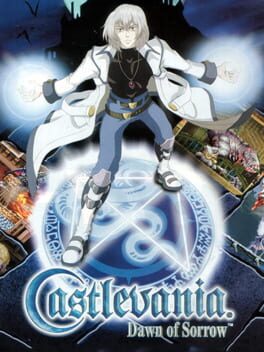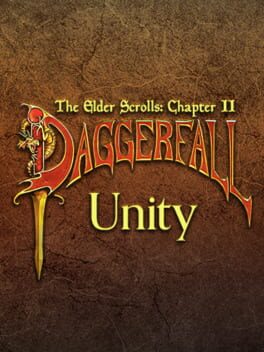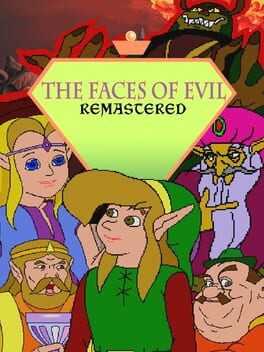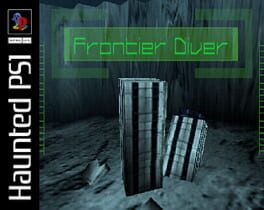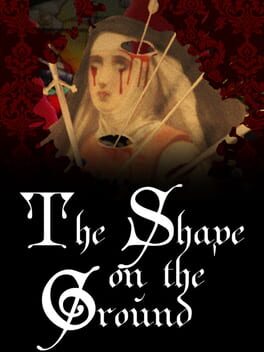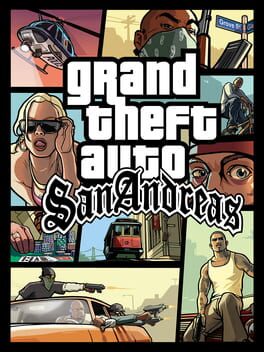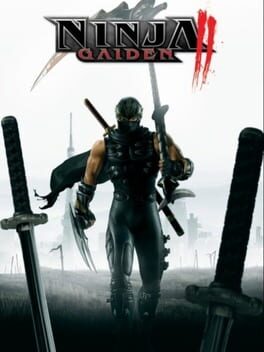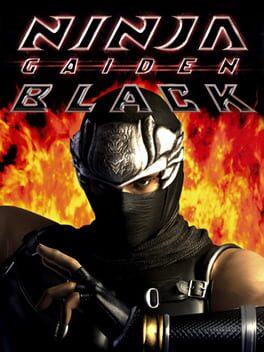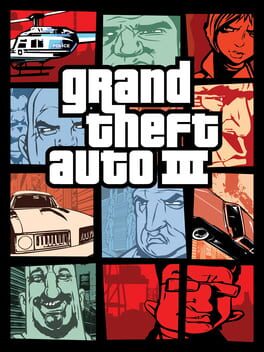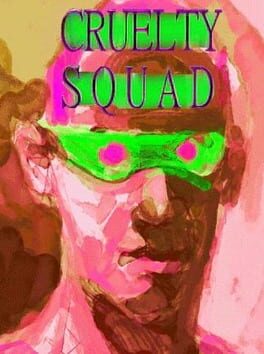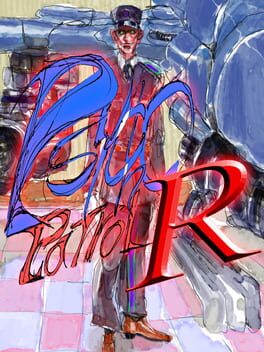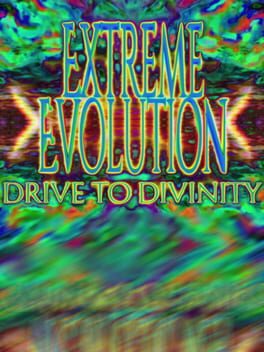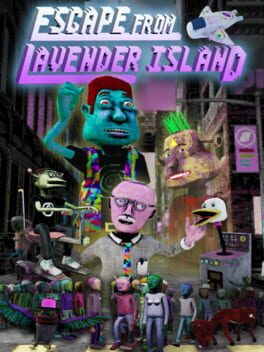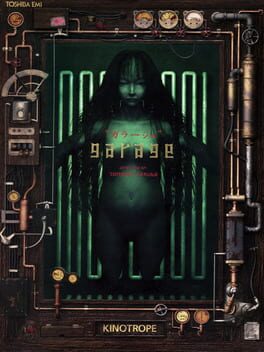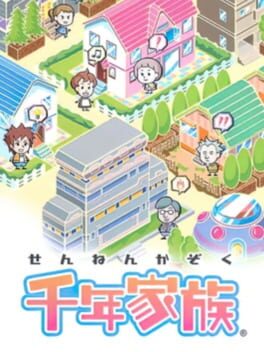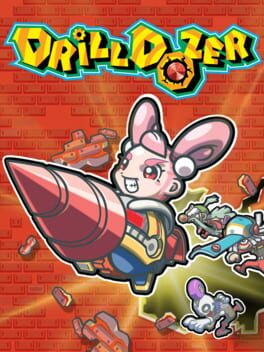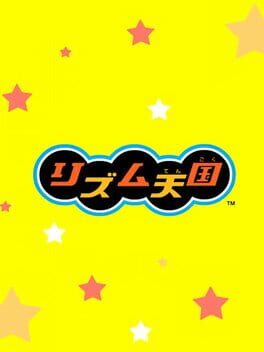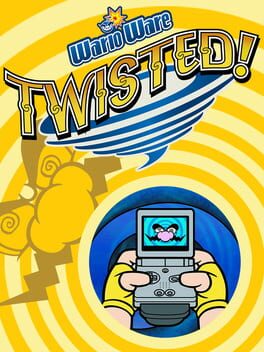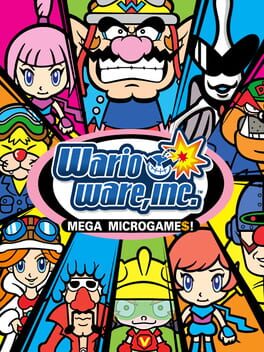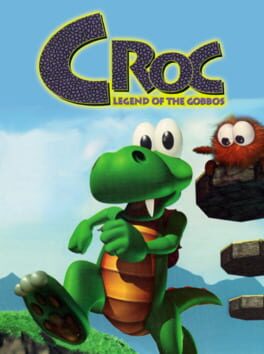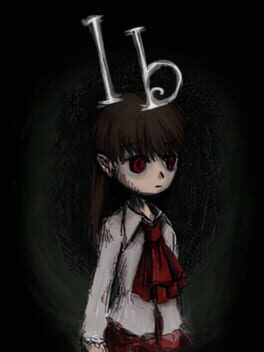hannenx
16 reviews liked by hannenx
Metroid Prime
2002
+this and re4 make gcn the go-to for best-of-all-time tank controls. obviously it's cheating a little bit here since you can toggle into strafing at any time, but I think it accurately captures the feeling of super metroid: just a wee bit clunky, but satisfying in its own way.
+another gcn-era relic: cutting-edge visuals on nintendo hardware. part of this is because of smart constraints on room sizes, but even bigger areas never drop in quality. runs at a smooth 60fps too!
+incorporating samus' visor into the UI is done so effectively and effortlessly that I'm surprised more developers haven't keyed in on this. it helps establish her sense of identity even without dialogue, and the reflection of her face in the glass is always stunning.
+having the temple + artifacts open from the get-go was a really smart choice. I didn't run into that many before the endgame but whenever I found one early I felt rather accomplished!
+hint system was honestly a smart move here. there's a lot of jumping back and forth between regions, and with the map not giving a lot of insight into where various "locks" are placed, it was good to get some insight into next steps.
+the morph ball translates so perfectly into 3D that I'm shocked they got it first try. legitimately fun to roll around in it, and including bomb jumping puzzles was a neat addition.
+environmental variety is absolutely on point, especially when it comes to memorable landmarks. I suppose part of this is because about half of the rooms in the game are loading hallways (god did my wii sound like it was choking playing this) but even revisiting old areas I never felt lost or confused at my location. each chunk of each region realizes an internal narrative and relation to the world around it that really hits the mark, especailly in phendrana drifts.
+I was surprised at how well the platforming was handled in this game, especially since the gravity jump boots are obtained so early on. given how constrainted the field of view is it's surprising how natural it feels. being able to switch to strafing in the air is also a clever moves on the devs part.
+scanning is such an inspired addition, both in that it's highly optional and yet allows for easy story-telling potential without moving into proper cutscene territory. the space pirates' commitment to methodical and structured evil is a little too on-the-nose, but their legitimate fear of samus and their own observations of tallon iv yield a surprising amount of depth. being able to scan enemies to quickly understand their behavior is an excellent strategy for a game like this as well.
+overall the first half is meticulously crafted and perfectly captures metroid's solemn exploration in 3D. gaining insight into the death of the chozo's civilization, wandering their ruins, solving small puzzles, and encountering each new area without significant threat is almost relaxing, which I rarely experience in first-person shooters.
+I honestly prefer having puzzles for most obtainable items rather than the more common movement-based challenges of the 2D series. there are so many unique contraptions around tallon iv that encourage creativity and experimentation!
+frigate orpheon is an all-time classic game opening, and such a smart way to acclimate the player to the controls before their kit is wrested away from them.
-a defining part of metroid to me is the power scaling: the annoyances you'd face traversing through hallways of creepy-crawlies melts away when you can tear through whole areas with the space jump and the screw attack. enemies are temporary obstacles in most cases to avoid backtracking from becoming stale. here, the game will throw stronger enemies into certain rooms as the game progresses, and you lack the same sort of all-encompassing firepower as in previous iterations. makes backtracking more of an annoyance than it should be.
-beam-switching is a core mechanic in the second half of the game and I hate it. if switching were snappier I would be less opposed, but it's cumbersome and sometimes unresponsive. it also inordinately unbalances enemies: ice pirates are trivial to eliminate since they can be frozen, but the regular beam pirates only take damage from your standard pea shooter, and thus are much harder to deal with. having to switch them constantly for doors is a bit of a hassle too.
-power bombs are effectively useless outside of opening doors. so much wasted potential. in the room right after you get them there's four security turrets that seem to imply the power bomb would be useful, and yet they aren't!
-late game pacing really suffers. there's a point where you get the x-ray visor, the power bomb, and the grapple hook back-to-back, and it makes it difficult to tell what should be used next. this is esp an issue for x-ray visor: there really needed to be a way to tell when it should be used to find hidden platforms (looking at you metroid quarantine A)
-having to return to the temple to get more hints for the artifact hunt is unquestionably a timewaster. making a full round trip to collect everything would have been much more satisfying than having to do it in two.
-the map really needed better visualization of where various locks are. there's too much to commit to memory!
-x-ray visor as a whole... was this supposed to be used to locate hidden items? because for the most part walking around with it on made me feel like I couldn't see two feet in front of my face. this is something that also should have been included in the map! tho I got 66% which is def better than some of the other metroid games I've played.
-boost ball sucks to use imo. takes a while to charge, and the game is really picky in the half-pipes about not having your thumb on the analog stick when you release the boost
-strafe-dash feels unresponsive. imo it comes down to controller limitation, since having it overide strafe-jumping is annoying and it would have made a lot more sense with a dedicated button (making it accessible without lock-on).
-not a single good boss. every single one far wears out its welcome, lacks moveset variety, and forces the player to wait around to open its weak point. ridley may be the most offensive one to me: he's always been a total slugfest, fire off your weaponry as fast as possible and dodge when you can. here I felt like I spent so much of his fight waiting for his mouth to be open or for him to fly closer to the ground.
-the special moves for each beam type are not very useful in combat given how easily they can miss and how long they take to charge up. wavebuster I at least used on wave pirates occasionally (even though they chug missiles like crazy), but I never used the ones for ice or plasma in a practical setting.
I wasn't sure how to structure this review initially... to tell the truth, I picked this game up much more seriously after a series of anxiety attacks led me to quit smoking weed cold turkey. this has been my rock as I've dealt with the withdrawal symptoms, and my daily accompaniment to relax the onset of anxiety, restlessness, insomnia, and constant aches and pains. it's also a game that is deeply nostalgic to me, as my dad played this series regularly when I was a child, and I often would poke around each one myself. I was never adept enough as a child to progress much further than chozo ruins, but returning now made me feel at home, able to absorb myself into samus as we push through a vast wilderness filled with quiet contemplation.
the above is why the second half saddens me so much: every qualm and quibble I have came into such sharp focus as the finish line drew near. it doesn't surprise me -- it's in a long line of obviously-rushed nintendo titles from the GCN era, and retro especially is known for their egregiously poor work policies and crunch -- but it left such a sour taste in my mouth that I can't help but document all of the annoyance and frustration it heaped upon me as I've physically recovered. I can hardly call it a bad game, but it's a shame that the joy this game brought me in the last week has been blotted out by other aspects that perhaps didn't need to overshadow how quintessential the start was. regardless, finally having this game behind me feels like a bit of a turning point, and I can't help but feel almost giddy having two more of these to play in the upcoming months.
+another gcn-era relic: cutting-edge visuals on nintendo hardware. part of this is because of smart constraints on room sizes, but even bigger areas never drop in quality. runs at a smooth 60fps too!
+incorporating samus' visor into the UI is done so effectively and effortlessly that I'm surprised more developers haven't keyed in on this. it helps establish her sense of identity even without dialogue, and the reflection of her face in the glass is always stunning.
+having the temple + artifacts open from the get-go was a really smart choice. I didn't run into that many before the endgame but whenever I found one early I felt rather accomplished!
+hint system was honestly a smart move here. there's a lot of jumping back and forth between regions, and with the map not giving a lot of insight into where various "locks" are placed, it was good to get some insight into next steps.
+the morph ball translates so perfectly into 3D that I'm shocked they got it first try. legitimately fun to roll around in it, and including bomb jumping puzzles was a neat addition.
+environmental variety is absolutely on point, especially when it comes to memorable landmarks. I suppose part of this is because about half of the rooms in the game are loading hallways (god did my wii sound like it was choking playing this) but even revisiting old areas I never felt lost or confused at my location. each chunk of each region realizes an internal narrative and relation to the world around it that really hits the mark, especailly in phendrana drifts.
+I was surprised at how well the platforming was handled in this game, especially since the gravity jump boots are obtained so early on. given how constrainted the field of view is it's surprising how natural it feels. being able to switch to strafing in the air is also a clever moves on the devs part.
+scanning is such an inspired addition, both in that it's highly optional and yet allows for easy story-telling potential without moving into proper cutscene territory. the space pirates' commitment to methodical and structured evil is a little too on-the-nose, but their legitimate fear of samus and their own observations of tallon iv yield a surprising amount of depth. being able to scan enemies to quickly understand their behavior is an excellent strategy for a game like this as well.
+overall the first half is meticulously crafted and perfectly captures metroid's solemn exploration in 3D. gaining insight into the death of the chozo's civilization, wandering their ruins, solving small puzzles, and encountering each new area without significant threat is almost relaxing, which I rarely experience in first-person shooters.
+I honestly prefer having puzzles for most obtainable items rather than the more common movement-based challenges of the 2D series. there are so many unique contraptions around tallon iv that encourage creativity and experimentation!
+frigate orpheon is an all-time classic game opening, and such a smart way to acclimate the player to the controls before their kit is wrested away from them.
-a defining part of metroid to me is the power scaling: the annoyances you'd face traversing through hallways of creepy-crawlies melts away when you can tear through whole areas with the space jump and the screw attack. enemies are temporary obstacles in most cases to avoid backtracking from becoming stale. here, the game will throw stronger enemies into certain rooms as the game progresses, and you lack the same sort of all-encompassing firepower as in previous iterations. makes backtracking more of an annoyance than it should be.
-beam-switching is a core mechanic in the second half of the game and I hate it. if switching were snappier I would be less opposed, but it's cumbersome and sometimes unresponsive. it also inordinately unbalances enemies: ice pirates are trivial to eliminate since they can be frozen, but the regular beam pirates only take damage from your standard pea shooter, and thus are much harder to deal with. having to switch them constantly for doors is a bit of a hassle too.
-power bombs are effectively useless outside of opening doors. so much wasted potential. in the room right after you get them there's four security turrets that seem to imply the power bomb would be useful, and yet they aren't!
-late game pacing really suffers. there's a point where you get the x-ray visor, the power bomb, and the grapple hook back-to-back, and it makes it difficult to tell what should be used next. this is esp an issue for x-ray visor: there really needed to be a way to tell when it should be used to find hidden platforms (looking at you metroid quarantine A)
-having to return to the temple to get more hints for the artifact hunt is unquestionably a timewaster. making a full round trip to collect everything would have been much more satisfying than having to do it in two.
-the map really needed better visualization of where various locks are. there's too much to commit to memory!
-x-ray visor as a whole... was this supposed to be used to locate hidden items? because for the most part walking around with it on made me feel like I couldn't see two feet in front of my face. this is something that also should have been included in the map! tho I got 66% which is def better than some of the other metroid games I've played.
-boost ball sucks to use imo. takes a while to charge, and the game is really picky in the half-pipes about not having your thumb on the analog stick when you release the boost
-strafe-dash feels unresponsive. imo it comes down to controller limitation, since having it overide strafe-jumping is annoying and it would have made a lot more sense with a dedicated button (making it accessible without lock-on).
-not a single good boss. every single one far wears out its welcome, lacks moveset variety, and forces the player to wait around to open its weak point. ridley may be the most offensive one to me: he's always been a total slugfest, fire off your weaponry as fast as possible and dodge when you can. here I felt like I spent so much of his fight waiting for his mouth to be open or for him to fly closer to the ground.
-the special moves for each beam type are not very useful in combat given how easily they can miss and how long they take to charge up. wavebuster I at least used on wave pirates occasionally (even though they chug missiles like crazy), but I never used the ones for ice or plasma in a practical setting.
I wasn't sure how to structure this review initially... to tell the truth, I picked this game up much more seriously after a series of anxiety attacks led me to quit smoking weed cold turkey. this has been my rock as I've dealt with the withdrawal symptoms, and my daily accompaniment to relax the onset of anxiety, restlessness, insomnia, and constant aches and pains. it's also a game that is deeply nostalgic to me, as my dad played this series regularly when I was a child, and I often would poke around each one myself. I was never adept enough as a child to progress much further than chozo ruins, but returning now made me feel at home, able to absorb myself into samus as we push through a vast wilderness filled with quiet contemplation.
the above is why the second half saddens me so much: every qualm and quibble I have came into such sharp focus as the finish line drew near. it doesn't surprise me -- it's in a long line of obviously-rushed nintendo titles from the GCN era, and retro especially is known for their egregiously poor work policies and crunch -- but it left such a sour taste in my mouth that I can't help but document all of the annoyance and frustration it heaped upon me as I've physically recovered. I can hardly call it a bad game, but it's a shame that the joy this game brought me in the last week has been blotted out by other aspects that perhaps didn't need to overshadow how quintessential the start was. regardless, finally having this game behind me feels like a bit of a turning point, and I can't help but feel almost giddy having two more of these to play in the upcoming months.
The Silver Case
2016
This review contains spoilers
Incredible game, was this really a PS1 game originally? Have no idea how they managed this graphical finesse, as well as the killer soundtrack. Please check out the character artist of the game: Takashi Miyamoto. Also Masafumi Takada, the composer of Danganronpa fame.
You essentially play as a character, who, in the modern remakes, you are able to name. Your character is basically silent throughout the whole game, traumatized from his experience as Special Ops agent, and it's speculated in the game that he can't even speak as a result. So as a result, you are kind of everyone's doormat at the start, fulfilling peoples requests. Your coworkers don't wanna do a case? Well hey, let's just drop it on the new guy.
The other storyline has you playing as the journalist Tokio Morishima.
Slight spoiler:
The game seems to me to be centered around the theme of "manufacturing". How our upbringing is "manufactured" (in a literal sense as you will see), and how we cover this up by instead seeing the conditioned responses we have from our childhood as our own, free choices. There is also the obvious theme of "killing the past" from a lot of Suda's other games. Knowing everything we know, can we still move on? The shadows are still there, but let them explode into light, and let's show that we have a soul and are not what happens to us. Let's show this against all odds, against the world which puts us through soul-crushing institutionalism. It's interesting, there are some live-action segments in this game, one where you see young people glamorizing a serial killer, showing how our desire for freedom can become mutated into idolizing violent people.
I did the unusual route of playing Flower, Sun and Rain first, I found that playing this after wasn't such a bad thing after all. Granted, had I played this first, Flower, Sun, and Rain would've had much more "a-ha!" moments, but I also would've seen that game in a much heavier light. I enjoyed the seeming nonsense of that game not knowing that it actually did... make some sense. Let's just say that the "Silver" in this games title will make sense as you play the game.
Granted, The Silver Case is a game you probably are not going to understand in just one or two playthroughs. It is a game where you have to make sure you are following exactly everything that is occurring, and connecting some of the dots yourself. Hell, you might want to keep a notebook for this one. Even after you think you connected the dots though, this game will throw an insane twist at you, so you never figure it all out and the game is pretty mysterious.
One of the most intense mysteries in the video game medium, I would say. Before your Zero Escapes and Danganronpas, here we have an intense mystery thriller marred with sharp wit, and sharp commentary on how our current affairs (within the criminal justice system, the education system) can lead to disasters that we don't even see.
Be prepared for F-bombs from Kusabi every 2 seconds. Also there is a fun pop quiz around 1/3 of the game where you literally answer 100 questions of popular culture trivia. Not making this up.
I'm officially Suda-pilled.
You essentially play as a character, who, in the modern remakes, you are able to name. Your character is basically silent throughout the whole game, traumatized from his experience as Special Ops agent, and it's speculated in the game that he can't even speak as a result. So as a result, you are kind of everyone's doormat at the start, fulfilling peoples requests. Your coworkers don't wanna do a case? Well hey, let's just drop it on the new guy.
The other storyline has you playing as the journalist Tokio Morishima.
Slight spoiler:
The game seems to me to be centered around the theme of "manufacturing". How our upbringing is "manufactured" (in a literal sense as you will see), and how we cover this up by instead seeing the conditioned responses we have from our childhood as our own, free choices. There is also the obvious theme of "killing the past" from a lot of Suda's other games. Knowing everything we know, can we still move on? The shadows are still there, but let them explode into light, and let's show that we have a soul and are not what happens to us. Let's show this against all odds, against the world which puts us through soul-crushing institutionalism. It's interesting, there are some live-action segments in this game, one where you see young people glamorizing a serial killer, showing how our desire for freedom can become mutated into idolizing violent people.
I did the unusual route of playing Flower, Sun and Rain first, I found that playing this after wasn't such a bad thing after all. Granted, had I played this first, Flower, Sun, and Rain would've had much more "a-ha!" moments, but I also would've seen that game in a much heavier light. I enjoyed the seeming nonsense of that game not knowing that it actually did... make some sense. Let's just say that the "Silver" in this games title will make sense as you play the game.
Granted, The Silver Case is a game you probably are not going to understand in just one or two playthroughs. It is a game where you have to make sure you are following exactly everything that is occurring, and connecting some of the dots yourself. Hell, you might want to keep a notebook for this one. Even after you think you connected the dots though, this game will throw an insane twist at you, so you never figure it all out and the game is pretty mysterious.
One of the most intense mysteries in the video game medium, I would say. Before your Zero Escapes and Danganronpas, here we have an intense mystery thriller marred with sharp wit, and sharp commentary on how our current affairs (within the criminal justice system, the education system) can lead to disasters that we don't even see.
Be prepared for F-bombs from Kusabi every 2 seconds. Also there is a fun pop quiz around 1/3 of the game where you literally answer 100 questions of popular culture trivia. Not making this up.
I'm officially Suda-pilled.
Ihatovo Monogatari
1993
On some shitty fundamental level, I probably believe that in order for something to be interesting as a "game" it requires a form of choice. I don't care about whether they have fail states, or whether your interaction with the world is limited--I just need that interaction to be driven by my curiosity, my skill, whatever it may be. Those are choices that I find engaging.
Playing Ihatovo Monogatari really helped put that into perspective for me. I've struggled with, and continue to struggle with, visual novels--not in the sense that I "don't think they're games" because who cares about that and hopefully most people have grown out of that level of bizarre gate-keeping, but in the sense that my interaction with many of them is pretty strictly driven by whether I feel compelled to read more text--occasionally with making choices so I can read how that text branches. When well-written I'm sure the genre is great, but they don't particularly excite me because it just makes me feel guilty about not reading books or watching films instead. They may have accompanying visuals and sounds that resonate and enhance, but for me they don't really have what makes games special.
Games like Ihatovo Monogatari are different because, as inconsequential as it may seem on the surface, having a physical avatar exploring a space to largely the same mechanical ends as a visual novel makes all the difference in the world to me. The game wouldn't be special without its pleasant world-building, characters and story, but those things are allowed to sing because I'm truly inhabiting the world as I explore it.
There are specific triggers needed to proceed--and that's where most of my problems with the game showed up, namely in the snow village chapter--but they're easier to forgive when your stumbling gives you the opportunity to soak in scenes; to see if that dog you passed earlier has something to say; to check in on the woman who sings outside her home; to stop by the theater to see if it's playing something new, or anything at all; to experience a new work from the local poet; and so much more. The synopsis for this game mentions "the opportunity to play the role of a temporary school teacher"--something I apparently missed out on, which is okay. [Or it's referring to a largely off-screen role in one of the chapters, perhaps.] As simple as the verbs are that you're equipped with in dealing with this small town and its outskirts, they feel more powerful because they were perfect enough for me to express my own engagement.
And it's a world that earns that engagement. The story--an elaborate and lovely tribute to real-life novelist and poet Kenji Miyazawa--is filled with bittersweet parables about the nature of humanity, communication and place. The vast majority of chapters are standalone snippets where the [at least I'm pretty sure] unnamed protagonist, motivated by his search for seven of Miyazawa's journals, stumbles into resolving and witnessing conflicts in the region. It's all accompanied by charming art, including beautiful cutscenes that tend to conclude chapters. [Props to the English fan translation as well; I don't know if it's a fantastic localization, but I do know it communicated well enough for me to get a lot out of it.]
The aforementioned triggers are the only kicker, and unfortunately there were times I found them to be frustrating enough to hurt what really works here. In those moments the expectation the game sets for you to walk back and forth between these triggers doesn't feel like an opportunity but instead like an inorganic roadblock. The vast majority of this confusion can be avoided since the town provides, depending on how you wish to look at it, two to four reliable "hint" hubs that can nudge you in the right direction. But sometimes even knowing the key players in a developing story, even with the assistance of these hubs, isn't enough, leading to wandering around and hoping you talk to the right character that reveals, oh, they just had this important item stowed away and sure you can have it, or even actions as simple as leaving the area.
So the awkward remnants of games past are here, but I still couldn't be happier about getting around to it, and it makes me feel incredibly grateful to fan communities that devote their time towards making these sorts of experiences more accessible. It seems fairly celebrated here on Backloggd which is great, but it's still very much an unsung moment from this period in gaming and I'm thrilled to have experienced it myself.
Playing Ihatovo Monogatari really helped put that into perspective for me. I've struggled with, and continue to struggle with, visual novels--not in the sense that I "don't think they're games" because who cares about that and hopefully most people have grown out of that level of bizarre gate-keeping, but in the sense that my interaction with many of them is pretty strictly driven by whether I feel compelled to read more text--occasionally with making choices so I can read how that text branches. When well-written I'm sure the genre is great, but they don't particularly excite me because it just makes me feel guilty about not reading books or watching films instead. They may have accompanying visuals and sounds that resonate and enhance, but for me they don't really have what makes games special.
Games like Ihatovo Monogatari are different because, as inconsequential as it may seem on the surface, having a physical avatar exploring a space to largely the same mechanical ends as a visual novel makes all the difference in the world to me. The game wouldn't be special without its pleasant world-building, characters and story, but those things are allowed to sing because I'm truly inhabiting the world as I explore it.
There are specific triggers needed to proceed--and that's where most of my problems with the game showed up, namely in the snow village chapter--but they're easier to forgive when your stumbling gives you the opportunity to soak in scenes; to see if that dog you passed earlier has something to say; to check in on the woman who sings outside her home; to stop by the theater to see if it's playing something new, or anything at all; to experience a new work from the local poet; and so much more. The synopsis for this game mentions "the opportunity to play the role of a temporary school teacher"--something I apparently missed out on, which is okay. [Or it's referring to a largely off-screen role in one of the chapters, perhaps.] As simple as the verbs are that you're equipped with in dealing with this small town and its outskirts, they feel more powerful because they were perfect enough for me to express my own engagement.
And it's a world that earns that engagement. The story--an elaborate and lovely tribute to real-life novelist and poet Kenji Miyazawa--is filled with bittersweet parables about the nature of humanity, communication and place. The vast majority of chapters are standalone snippets where the [at least I'm pretty sure] unnamed protagonist, motivated by his search for seven of Miyazawa's journals, stumbles into resolving and witnessing conflicts in the region. It's all accompanied by charming art, including beautiful cutscenes that tend to conclude chapters. [Props to the English fan translation as well; I don't know if it's a fantastic localization, but I do know it communicated well enough for me to get a lot out of it.]
The aforementioned triggers are the only kicker, and unfortunately there were times I found them to be frustrating enough to hurt what really works here. In those moments the expectation the game sets for you to walk back and forth between these triggers doesn't feel like an opportunity but instead like an inorganic roadblock. The vast majority of this confusion can be avoided since the town provides, depending on how you wish to look at it, two to four reliable "hint" hubs that can nudge you in the right direction. But sometimes even knowing the key players in a developing story, even with the assistance of these hubs, isn't enough, leading to wandering around and hoping you talk to the right character that reveals, oh, they just had this important item stowed away and sure you can have it, or even actions as simple as leaving the area.
So the awkward remnants of games past are here, but I still couldn't be happier about getting around to it, and it makes me feel incredibly grateful to fan communities that devote their time towards making these sorts of experiences more accessible. It seems fairly celebrated here on Backloggd which is great, but it's still very much an unsung moment from this period in gaming and I'm thrilled to have experienced it myself.
Ihatovo Monogatari
1993
Beautiful and methodical pseudo-fanfiction about the works of Kenji Miyazawa and really more about his legacy in culture. There's a big element of this game absolutely not having the same takeaway about Miyazawa's works, especially in the way this game thinks of the Galactic Railroad, but it is making delicate and future-looking moves with the adventure game formula that grip the RPG Maker community to this day that make it real easy to not get so hung up on that. Ihatovo Monogatari imposes a quest to chase down a fleeting mythical figure against the daily mundanity of the downtrodden workers, farmers, peasants, and youth. While you float through fantastical moments, life moves on: the young family moves south for the winter, the scorned worker is chased out of town suddenly, the boy you helped out last week died of a fever off screen. The things you chase in life can only amount to the character of your actions that get you there. Live wisely, fiercely, and kindly to struggle along side those who surround you.
The Silver Case
2016
【10 JUNE 2021, THURSDAY_ 】
【LETSHUGBRO'S HOUSE _ 】
【07:38 AM】
ᴸᴱᵀˢᴴᵁᴳᴮᴿᴼ
Augh... █
ᴸᴱᵀˢᴴᵁᴳᴮᴿᴼ
Not this again... █
C
I + M
S
[M]
C + S
I
ᴹᴼⱽᴱᴹᴱᴺᵀ
[E]
S + N
W
ᴹᴼⱽᴱᴹᴱᴺᵀ
[N]
W + E
S
ᶜᴼᴺᵀᴬᶜᵀ
[computer]
[C]
I + M
S
[INBOX] [OUTBOX] [MEMO]
[BACKLOGGD] [SENT] [CHAT]
[INBOX] [OUTBOX] [MEMO]
>>[BACKLOGGD]<< [SENT] [CHAT]
You have logged on to Backloggd.com
--------------------------
(letshugbro) "The Silver Case", huh... █
(letshugbro) Looks interesting. █
(DongSmoker420) it's one of the best games of all time u dumbass █
(K0J1M41SG0D) it's suda51's masterpiece █
(letshugbro) Hmmm.... █
(letshugbro) I guess I should play it. █
(Charizardscumhunter) KILL YOURSELF █
>>[INBOX]<< [OUTBOX] [MEMO]
[BACKLOGGD] [SENT] [CHAT]
>> 21/06/21 • Steam Store • Your order... <<
21/06/21 • Blue Chew • Feedback on...
21/06/21 • Uber Eats • McDonalds 20 P...
--------------------------
10th July 2021
From: Steam Store
To: Lets Hug Bro
Subject: Your order of 'The Silver Case & The 25th Ward: The Silver Case Digital Limited Edition'
Thank you for your recent transaction on Steam.
The items below have been added to your Steam Library.
If you are new to Steam, you can get the free Steam application here.
Purchased DLC will automatically be added. You can find it on the Library page of the base game.
--------------------------
ᴸᴱᵀˢᴴᵁᴳᴮᴿᴼ
. . . █
ᴸᴱᵀˢᴴᵁᴳᴮᴿᴼ
Okay. █
ᴸᴱᵀˢᴴᵁᴳᴮᴿᴼ
Guess I'll try this game out... █
| | | | | | | | | | | | | | | | | | | | | | | | | | | | | | | | | | | | | | | |
【25 JULY 2021 , SUNDAY_ 】
【LETSHUGBRO'S HOUSE _ 】
【1 1:3 7 AM】
ᴸᴱᵀˢᴴᵁᴳᴮᴿᴼ
What the fuck was that all about? █
【LETSHUGBRO'S HOUSE _ 】
【07:38 AM】
ᴸᴱᵀˢᴴᵁᴳᴮᴿᴼ
Augh... █
ᴸᴱᵀˢᴴᵁᴳᴮᴿᴼ
Not this again... █
C
I + M
S
[M]
C + S
I
ᴹᴼⱽᴱᴹᴱᴺᵀ
[E]
S + N
W
ᴹᴼⱽᴱᴹᴱᴺᵀ
[N]
W + E
S
ᶜᴼᴺᵀᴬᶜᵀ
[computer]
[C]
I + M
S
[INBOX] [OUTBOX] [MEMO]
[BACKLOGGD] [SENT] [CHAT]
[INBOX] [OUTBOX] [MEMO]
>>[BACKLOGGD]<< [SENT] [CHAT]
You have logged on to Backloggd.com
--------------------------
(letshugbro) "The Silver Case", huh... █
(letshugbro) Looks interesting. █
(DongSmoker420) it's one of the best games of all time u dumbass █
(K0J1M41SG0D) it's suda51's masterpiece █
(letshugbro) Hmmm.... █
(letshugbro) I guess I should play it. █
(Charizardscumhunter) KILL YOURSELF █
>>[INBOX]<< [OUTBOX] [MEMO]
[BACKLOGGD] [SENT] [CHAT]
>> 21/06/21 • Steam Store • Your order... <<
21/06/21 • Blue Chew • Feedback on...
21/06/21 • Uber Eats • McDonalds 20 P...
--------------------------
10th July 2021
From: Steam Store
To: Lets Hug Bro
Subject: Your order of 'The Silver Case & The 25th Ward: The Silver Case Digital Limited Edition'
Thank you for your recent transaction on Steam.
The items below have been added to your Steam Library.
If you are new to Steam, you can get the free Steam application here.
Purchased DLC will automatically be added. You can find it on the Library page of the base game.
--------------------------
ᴸᴱᵀˢᴴᵁᴳᴮᴿᴼ
. . . █
ᴸᴱᵀˢᴴᵁᴳᴮᴿᴼ
Okay. █
ᴸᴱᵀˢᴴᵁᴳᴮᴿᴼ
Guess I'll try this game out... █
| | | | | | | | | | | | | | | | | | | | | | | | | | | | | | | | | | | | | | | |
【25 JULY 2021 , SUNDAY_ 】
【LETSHUGBRO'S HOUSE _ 】
【1 1:3 7 AM】
ᴸᴱᵀˢᴴᵁᴳᴮᴿᴼ
What the fuck was that all about? █
Final Fantasy VII
1997
new year's update from the abode: just finished the ff7 end credits crawl right as I closed out of the game I missed the ball drop. a bit of a shame but oh well... got a bit crossfaded and had a steamed pork bun so I was relaxed all the same. just sitting here pondering... why is this game the go-to "old-school classic game that's also political"? metal gear solid came out just a year later and has a much more coherent (if sort of uninspired) political statement, whereas ff7 is just totally all over the place. the effects of shinra's power plant experimentation on the lifestream are incredibly well-documented throughout the game, so the bedrock of the environmentalist message is there (the way it's presented reminds me of princess mononoke, released the same year), but the direct action via ecoterrorism part is fumbled so bad. there's a scene where barrett (leader of ecoterrorist insurgency AVALANCHE and party member) basically turns to the camera and says "hey I was thinking about it and I realized blowing up the energy reactors was actually wrong, sorry about that!" with absolutely no nuance or discussion at all, much less even presenting the reasoning that led him to that in the first place. the anti-capitalist stuff... like shinra is a "corporation" but it's functionally a giant malevolent social entity somewhere between a militant nation-state and an international empire/world order. if the name had been "people's republic of shinra" and no other content was changed I'm sure we would get puffy right-wing doughboys extoling the game's "critique of totalitarianism" in an equally baseless way. it's not that the intent isn't there - ff7r did a better job interrogating the class hierarchy of midgar while at the same time attempting to rectify AVALANCHE's contradicitions - but it's insubstantial to the point where I'm not sure I would even classify it as a "theme." I think it may be fair to say that the game has an anti-capitalist aesthetic, or setting.
some of it might be lost in translation too: it's shocking that modern ports of this game are still using the original translation. a presumably much richer text lies obscured behind a fog of awkwardly terse dialogue riddled with mistakes and typos. the clumsy cursing is charming to be sure, especially for a game of its era, but this script should have been cleaned up ages ago. it's really a shame, and one that has me wishing I had chosen to play the retranslation instead... especially since I find the HD versions sort of ugly with how much the clean polygonal characters stick out on the low-res backgrounds. I'd be much happier playing it in 240p with everything blended together as originally intended.
regardless of all of the above though, the story is a legitimately fascinating and grim refutation of the typical jrpg tropes of hero, past, sacrifice, and redemption that few other works can attest to, much less any that also simultaneously introduced much of the world to jrpgs in the first place. it's not just the lack of a fantasy setting that is surprising but the shockingly-fresh fusion of early industrial age ephemera with japan's distinct flavor of body-horror cyberpunk. that beginning chapter in midgar, the power plant raids, the MBV sign, the cathedral, wall market, and the assault on shinra tower all flow past the player as something uncompromised in its design and totally divorced from what had come before. midgar is a husk of a metropolis filled to the brim with refuse and abandoned buildings, and when cloud and his party finally venture from beyond its walls, it becomes quickly apparent that their world is completely beyond saving as well. much of the middle sections of the game focus on lifeless landscapes filled with mutated creatures and interspersed with dots of human survival. cloud himself is broken and often a passive force, and his self-realization as a victim of shinra and yet a vital agent of change serves as the hingepoint from where the game shfits from dejected wandering to assertive heroism (though the details of his past are probably better explained via the wiki than in-game). in a lot of ways, the protagonists - who tbf are rather shoddily assembled beyond the characters from the midgar section - are united on their will to succeed despite having already lost virtually everything. square's unflinching ending further subverts expectations by not rewarding the heroes for their actions: their civilization was on its death knell regardless of their intervention.
ff7 also just has some goddamn good jrpg combat, the kind I think about when I'm picturing comfy turn-based action in my head. every character is fully modular thanks to materia, which determines all skills, magic, and stat bonuses for each character. with virtually no grinding you can pick and choose your preferred tools and build your characters to taste; for most of the endgame I had cid handling barrier magic and taking potshots while cloud tanked and red xiii handled heal, time, and black magic. the limit break system in play here is also an incredible mechanic that gives players powerful tools when serious damage has been taken that opens up a lot of potential for amazing comebacks. the way you snap to your next turn once the gauge fills removes all of the stress of taking a particular large blow and having to wait to recuperate... just totally flawless. boss and encounter design is rock-solid as in the previous titles, and for what the game lacks in difficulty thanks to the flexibility of materia it makes up for in spades with the flashy combat visualizations. putting so many resources into lively battle animations and appealing summons shows that square more than understood the power of next-gen for jrpgs more than perhaps any other studio (team andromeda nonewithstanding?). there's quibbles I have for sure: it can be hard to tell which direction to click to select a character in some cases, and summon animations really should've been skippable. dungeon design is also underwhelming thanks to the unwieldy and often visually cluttered pre-rendered backdrops. however, just sitting down and playing this is comfier than perhaps any other ATB-era ff game... three characters, great low-poly models, awesome animations, and flexible battle mechanics.
overall it's a classic, a lovely romp through the minds of square's best creative talent, and satisfying to complete. it's hard to pinpoint for me what puts this one just out of masterpiece range... it pretty much comes down to the pacing being so incredibly uneven, the official translation being terrible, and the dungeon design feeling lackluster (though the scenery is almost always gorgeous). if anything I really need to replay this with the retranslation on my ps2 and see if getting a more authentic experience pushes it over for the edge for me. still fantastic regardless, and a perfect way to cap off the year.
some of it might be lost in translation too: it's shocking that modern ports of this game are still using the original translation. a presumably much richer text lies obscured behind a fog of awkwardly terse dialogue riddled with mistakes and typos. the clumsy cursing is charming to be sure, especially for a game of its era, but this script should have been cleaned up ages ago. it's really a shame, and one that has me wishing I had chosen to play the retranslation instead... especially since I find the HD versions sort of ugly with how much the clean polygonal characters stick out on the low-res backgrounds. I'd be much happier playing it in 240p with everything blended together as originally intended.
regardless of all of the above though, the story is a legitimately fascinating and grim refutation of the typical jrpg tropes of hero, past, sacrifice, and redemption that few other works can attest to, much less any that also simultaneously introduced much of the world to jrpgs in the first place. it's not just the lack of a fantasy setting that is surprising but the shockingly-fresh fusion of early industrial age ephemera with japan's distinct flavor of body-horror cyberpunk. that beginning chapter in midgar, the power plant raids, the MBV sign, the cathedral, wall market, and the assault on shinra tower all flow past the player as something uncompromised in its design and totally divorced from what had come before. midgar is a husk of a metropolis filled to the brim with refuse and abandoned buildings, and when cloud and his party finally venture from beyond its walls, it becomes quickly apparent that their world is completely beyond saving as well. much of the middle sections of the game focus on lifeless landscapes filled with mutated creatures and interspersed with dots of human survival. cloud himself is broken and often a passive force, and his self-realization as a victim of shinra and yet a vital agent of change serves as the hingepoint from where the game shfits from dejected wandering to assertive heroism (though the details of his past are probably better explained via the wiki than in-game). in a lot of ways, the protagonists - who tbf are rather shoddily assembled beyond the characters from the midgar section - are united on their will to succeed despite having already lost virtually everything. square's unflinching ending further subverts expectations by not rewarding the heroes for their actions: their civilization was on its death knell regardless of their intervention.
ff7 also just has some goddamn good jrpg combat, the kind I think about when I'm picturing comfy turn-based action in my head. every character is fully modular thanks to materia, which determines all skills, magic, and stat bonuses for each character. with virtually no grinding you can pick and choose your preferred tools and build your characters to taste; for most of the endgame I had cid handling barrier magic and taking potshots while cloud tanked and red xiii handled heal, time, and black magic. the limit break system in play here is also an incredible mechanic that gives players powerful tools when serious damage has been taken that opens up a lot of potential for amazing comebacks. the way you snap to your next turn once the gauge fills removes all of the stress of taking a particular large blow and having to wait to recuperate... just totally flawless. boss and encounter design is rock-solid as in the previous titles, and for what the game lacks in difficulty thanks to the flexibility of materia it makes up for in spades with the flashy combat visualizations. putting so many resources into lively battle animations and appealing summons shows that square more than understood the power of next-gen for jrpgs more than perhaps any other studio (team andromeda nonewithstanding?). there's quibbles I have for sure: it can be hard to tell which direction to click to select a character in some cases, and summon animations really should've been skippable. dungeon design is also underwhelming thanks to the unwieldy and often visually cluttered pre-rendered backdrops. however, just sitting down and playing this is comfier than perhaps any other ATB-era ff game... three characters, great low-poly models, awesome animations, and flexible battle mechanics.
overall it's a classic, a lovely romp through the minds of square's best creative talent, and satisfying to complete. it's hard to pinpoint for me what puts this one just out of masterpiece range... it pretty much comes down to the pacing being so incredibly uneven, the official translation being terrible, and the dungeon design feeling lackluster (though the scenery is almost always gorgeous). if anything I really need to replay this with the retranslation on my ps2 and see if getting a more authentic experience pushes it over for the edge for me. still fantastic regardless, and a perfect way to cap off the year.
Mother 3
2006
the suburban pastiche of earthbound (and mother) was comforting thanks to its familiarity. it's a game where you can point at the screen and say "look, that's like my life!" pulling money from an ATM, stopping by the mall to grab a burger, or wandering around the natural history museum, these aesthetic choices work precisely because of how the expected unreality of the game world becomes subverted into a representation of reality. it's novel in its presentation, and enhanced by the quirky charm of the townspeople along with the tangents into both goofy myth and unsettling sci-fi horror.
which makes your first moments walking into a similar world after a between-chapters skip of multiple years in mother 3 such a slap in the face. our protagonist lucas, one of the few remaining denizens attempting to reject a new capitalist order, now glumly walks through these same suburban streets. former stalwart geezers contributing to the town's safety have been all but locked away in a dilapitated nursing home, while lucas's peers scarcely older than he work for wages in the nearby clay mines. the cheerful dialogue from the townspeople now solely consists of those chiding lucas for not getting with the times in between questioning why virtually every other defector's house has gone up in flames. it's the same carefree music of adolescence, the same bright thin-line artstyle, the same casual strolls around town, but tainted by your knowledge of the utopia of the society that came before and the decadence of the modernization that has come in its wake. it is, in essence, a loss of innocence. the unfair and early death of lucas's mother at the start of the game shattered it, and post timeskip you get a close glimpse of its proverbial corpse.
it is indeed somewhat funny the lengths that itoi went to establish the despair of modern civilization; endearingly awkward as his writing is, occasionally it gets into simply awkward territory the more it moralizes. yes, there is a token native american stereotype, and yes, his tipi gets blown to smithereens by artificial lightning post-timeskip. the magypsies as well, in attempt to enforce their alien nature given their status as immortal standardbearers of the world as it stands, are othered via their gender representation... which ends up being rather distasteful "okama" cariactures. my reason for pointing these out is not to discredit the rest of the work, but more to note that itoi bit off more than he could chew with some of the themes. he really wanted to demonstrate how fucked modernization is, man! so in the process some of the imagery gets a little hamfisted or straight-up ???... but that first time you walk into the modernized tazmily it hit me so hard.
likewise when you finally arrive at new pork city late in the game, the ghoulish tackiness of it all is so evident. the bizarre international mishmashes and cardboard cutout buildings, like toy props in a set of figurines (or buildings without polygons in the rear like a video game with fixed perspective) they illustrate gestures towards culture generation with vapid facsimile in place of rich tradition. it's a childlike conception of urban life: video games in walking distance and 24/7 screenings of heroes from another world. the idyllic norman rockwell landscape of earthbound has been grafted onto the communal tazmily like metal plates welded to biological creatures. all of it enforced by heiling stormtroopers in sneering pig masks... ok again, the imagery is really hamfisted. let itoi cook!
somehow even with this ideological shift in the people of tazmily, itoi still goes out of his way to illustrate the cruelty that lurks under the otherwise flawless exterior of their transactionless lifestyle. duster's bum leg, a physical reminder of his abuse at the hands of wess, is openly acknowledged, and yet the weight is silently borne by duster himself. his plain looks and questionable hygiene belie his thief tool mastery and serious upright bass chops, regardless of the verbal degredatation his father puts him through. likewise flint, stoic in his initial voiceless protagonist role, suffers a truly heartbreaking outburst of rage late in his campaign, indicating the dam about to burst on the societal shift to come. even lucas and claus play-act fighting with the local dragos at the very beginning of the game; the language of violence is still engrained in the minds of those living outside of capitalism.
the first three chapters are dedicated primarily to this plot, with the old rpg elements streamlined and the party limited. admittedly I'm not a big fan of the parts of earthbound where you're limited to a one or two person party; I just don't think you can come up with strategies that interesting when there's only a couple of moves to work with each turn. likewise, mother 3 provides different perspectives across each chapter with small parties carefully paced around the relative strength of the bosses they'll face. each character at this point can use special attacks and debuffs for free, removing the resource-management usually inherent in jrpgs. this isn't entirely bad, as it allows the player to experiment with various special abilities, but it would've gotten rather tedious after the six or seven hours it lasted. the point at which I got tired of this setup was in the lucas/boney fight against the jealous bass, which virtually necessitates using explosive items in order to outpace the devastating jam sessions they lay on you.
thankfully after this mother 3 wants to remind you that it's a real-ass jrpg, and thus the party is assembled... lucas, black mage kumatora, duster with his thief tools, and boney the dog. out of these mechanically boney is unfortunately undercooked; his only special move is "sniff" which senses the enemy's weaknesses, and his stats are gimped by being unable to use most equipment. thus most of the interesting fighting relies on the other three characters. I love how the mother series crystallizes the heroism of their heroes through making them healing mages, and lucas is no exception. while he has excellent attack, he's also equipped with a bevy of abilities such as setting up shields, buffing stats, and giving full revives to anyone or everyone in the party. kumatora handles all of the debuffs and attack magic, while duster is able to also apply free debuffs in exchange for a middling activation rate.
in turn the bosses get significantly more powerful, especially in the lengthy chapter 7. this whole section serves as a truncated redo of the same kind of "find the macguffin in each area" structure from earthbound, and with each needle pulled at the end of each area comes a more fiendlishly difficult boss. high base defense, extremely strong full-party attacks, switching between physical and PSI attacks, and even being able to destroy your shields at will all make character death frequent, and without smart planning and exploitation of the series's distinctive health counter system, it will be difficult to overcome some of the late-game fights. to my surprise other than the infamous barrier trio fight I didn't find that most of the fights revolved around simple weakness matching either; there's legitimately challenging turn-based slugfests balanced just right not to require grinding as long as you don't mind taking detours for items here and there.
complimenting the basics here are rhythm game elements which require the player to click the attack button in time with the backing beat to create a combo of up to 16 attacks in a row for a notable damage increase. while conceptually simple, the expansively eclectic soundtrack makes following the rhythm often require a significant amount of concentration. beats are dropped occasionally or sections will have tempos that vary, forcing the player to keep track of when they start attacking to ensure they don't get interrupted and lose valuable damage. following the beat itself rarely varies outside of simply tapping the backbeat however, which is a bit disappointing outside of a couple outliers like the 15/8 timpani-led Strong One. other songs occasionally try off-beat rhythms or more complex bass patterns, but unfortunately all of this is held back by the game's inconsistent timing windows. I played this on 3ds through rom injection which is generally considered to be extremely close to hardware-accurate, and yet I consistently noticed that the windows on certain songs required me to be a touch late. anything with eighth notes is a total crapshoot unfortunately, and thus I can see why they limited the songs that contained these pretty significantly. surprisingly enough the final chapter of the game features few difficult songs, making most of the encounters relatively easy to finish with only regular attacks, and I was hoping to hear the really bizarre tunes come out during the final mobs and bosses. however it's obvious the system was meant to be more of a bonus damage system, and thankfully the whole game can be managed without it if you're crafty enough with your PSI and thieves tool use.
without a doubt when compared to its meandering predecessor mother 3 focuses its satire on actually tearing apart the origins of the americana it draws from. at the same time it's a perfectly enjoyable jrpg with a neat rhythm mechanic and the same counter mechanism from earthbound to make timing your actions carefully utterly important; a rarity for turn-based games. as the game comes to a close those who played earthbound will receive an unsettling reminder of the artifacts from those games and the influence they played upon the creation of the world our heroes exist in, and the ending is cataclysmic and only partially resolved. for a game infused with so much levity, it's remarkably grim at the same time. I can only assume this juxtaposition of tones is what itoi was trying to summon all along.
which makes your first moments walking into a similar world after a between-chapters skip of multiple years in mother 3 such a slap in the face. our protagonist lucas, one of the few remaining denizens attempting to reject a new capitalist order, now glumly walks through these same suburban streets. former stalwart geezers contributing to the town's safety have been all but locked away in a dilapitated nursing home, while lucas's peers scarcely older than he work for wages in the nearby clay mines. the cheerful dialogue from the townspeople now solely consists of those chiding lucas for not getting with the times in between questioning why virtually every other defector's house has gone up in flames. it's the same carefree music of adolescence, the same bright thin-line artstyle, the same casual strolls around town, but tainted by your knowledge of the utopia of the society that came before and the decadence of the modernization that has come in its wake. it is, in essence, a loss of innocence. the unfair and early death of lucas's mother at the start of the game shattered it, and post timeskip you get a close glimpse of its proverbial corpse.
it is indeed somewhat funny the lengths that itoi went to establish the despair of modern civilization; endearingly awkward as his writing is, occasionally it gets into simply awkward territory the more it moralizes. yes, there is a token native american stereotype, and yes, his tipi gets blown to smithereens by artificial lightning post-timeskip. the magypsies as well, in attempt to enforce their alien nature given their status as immortal standardbearers of the world as it stands, are othered via their gender representation... which ends up being rather distasteful "okama" cariactures. my reason for pointing these out is not to discredit the rest of the work, but more to note that itoi bit off more than he could chew with some of the themes. he really wanted to demonstrate how fucked modernization is, man! so in the process some of the imagery gets a little hamfisted or straight-up ???... but that first time you walk into the modernized tazmily it hit me so hard.
likewise when you finally arrive at new pork city late in the game, the ghoulish tackiness of it all is so evident. the bizarre international mishmashes and cardboard cutout buildings, like toy props in a set of figurines (or buildings without polygons in the rear like a video game with fixed perspective) they illustrate gestures towards culture generation with vapid facsimile in place of rich tradition. it's a childlike conception of urban life: video games in walking distance and 24/7 screenings of heroes from another world. the idyllic norman rockwell landscape of earthbound has been grafted onto the communal tazmily like metal plates welded to biological creatures. all of it enforced by heiling stormtroopers in sneering pig masks... ok again, the imagery is really hamfisted. let itoi cook!
somehow even with this ideological shift in the people of tazmily, itoi still goes out of his way to illustrate the cruelty that lurks under the otherwise flawless exterior of their transactionless lifestyle. duster's bum leg, a physical reminder of his abuse at the hands of wess, is openly acknowledged, and yet the weight is silently borne by duster himself. his plain looks and questionable hygiene belie his thief tool mastery and serious upright bass chops, regardless of the verbal degredatation his father puts him through. likewise flint, stoic in his initial voiceless protagonist role, suffers a truly heartbreaking outburst of rage late in his campaign, indicating the dam about to burst on the societal shift to come. even lucas and claus play-act fighting with the local dragos at the very beginning of the game; the language of violence is still engrained in the minds of those living outside of capitalism.
the first three chapters are dedicated primarily to this plot, with the old rpg elements streamlined and the party limited. admittedly I'm not a big fan of the parts of earthbound where you're limited to a one or two person party; I just don't think you can come up with strategies that interesting when there's only a couple of moves to work with each turn. likewise, mother 3 provides different perspectives across each chapter with small parties carefully paced around the relative strength of the bosses they'll face. each character at this point can use special attacks and debuffs for free, removing the resource-management usually inherent in jrpgs. this isn't entirely bad, as it allows the player to experiment with various special abilities, but it would've gotten rather tedious after the six or seven hours it lasted. the point at which I got tired of this setup was in the lucas/boney fight against the jealous bass, which virtually necessitates using explosive items in order to outpace the devastating jam sessions they lay on you.
thankfully after this mother 3 wants to remind you that it's a real-ass jrpg, and thus the party is assembled... lucas, black mage kumatora, duster with his thief tools, and boney the dog. out of these mechanically boney is unfortunately undercooked; his only special move is "sniff" which senses the enemy's weaknesses, and his stats are gimped by being unable to use most equipment. thus most of the interesting fighting relies on the other three characters. I love how the mother series crystallizes the heroism of their heroes through making them healing mages, and lucas is no exception. while he has excellent attack, he's also equipped with a bevy of abilities such as setting up shields, buffing stats, and giving full revives to anyone or everyone in the party. kumatora handles all of the debuffs and attack magic, while duster is able to also apply free debuffs in exchange for a middling activation rate.
in turn the bosses get significantly more powerful, especially in the lengthy chapter 7. this whole section serves as a truncated redo of the same kind of "find the macguffin in each area" structure from earthbound, and with each needle pulled at the end of each area comes a more fiendlishly difficult boss. high base defense, extremely strong full-party attacks, switching between physical and PSI attacks, and even being able to destroy your shields at will all make character death frequent, and without smart planning and exploitation of the series's distinctive health counter system, it will be difficult to overcome some of the late-game fights. to my surprise other than the infamous barrier trio fight I didn't find that most of the fights revolved around simple weakness matching either; there's legitimately challenging turn-based slugfests balanced just right not to require grinding as long as you don't mind taking detours for items here and there.
complimenting the basics here are rhythm game elements which require the player to click the attack button in time with the backing beat to create a combo of up to 16 attacks in a row for a notable damage increase. while conceptually simple, the expansively eclectic soundtrack makes following the rhythm often require a significant amount of concentration. beats are dropped occasionally or sections will have tempos that vary, forcing the player to keep track of when they start attacking to ensure they don't get interrupted and lose valuable damage. following the beat itself rarely varies outside of simply tapping the backbeat however, which is a bit disappointing outside of a couple outliers like the 15/8 timpani-led Strong One. other songs occasionally try off-beat rhythms or more complex bass patterns, but unfortunately all of this is held back by the game's inconsistent timing windows. I played this on 3ds through rom injection which is generally considered to be extremely close to hardware-accurate, and yet I consistently noticed that the windows on certain songs required me to be a touch late. anything with eighth notes is a total crapshoot unfortunately, and thus I can see why they limited the songs that contained these pretty significantly. surprisingly enough the final chapter of the game features few difficult songs, making most of the encounters relatively easy to finish with only regular attacks, and I was hoping to hear the really bizarre tunes come out during the final mobs and bosses. however it's obvious the system was meant to be more of a bonus damage system, and thankfully the whole game can be managed without it if you're crafty enough with your PSI and thieves tool use.
without a doubt when compared to its meandering predecessor mother 3 focuses its satire on actually tearing apart the origins of the americana it draws from. at the same time it's a perfectly enjoyable jrpg with a neat rhythm mechanic and the same counter mechanism from earthbound to make timing your actions carefully utterly important; a rarity for turn-based games. as the game comes to a close those who played earthbound will receive an unsettling reminder of the artifacts from those games and the influence they played upon the creation of the world our heroes exist in, and the ending is cataclysmic and only partially resolved. for a game infused with so much levity, it's remarkably grim at the same time. I can only assume this juxtaposition of tones is what itoi was trying to summon all along.
ChainDive
2003
Killer7
2005
Dark Savior
1996
185 lists liked by hannenx
by abri |
250 Games
by dryad |
79 Games
by CModel |
504 Games
by skellygore |
63 Games
by pex |
25 Games
by MendelPalace |
100 Games
by DizzySkullKid19 |
9 Games
by BeeKirby |
63 Games
by LauraLob0 |
276 Games
